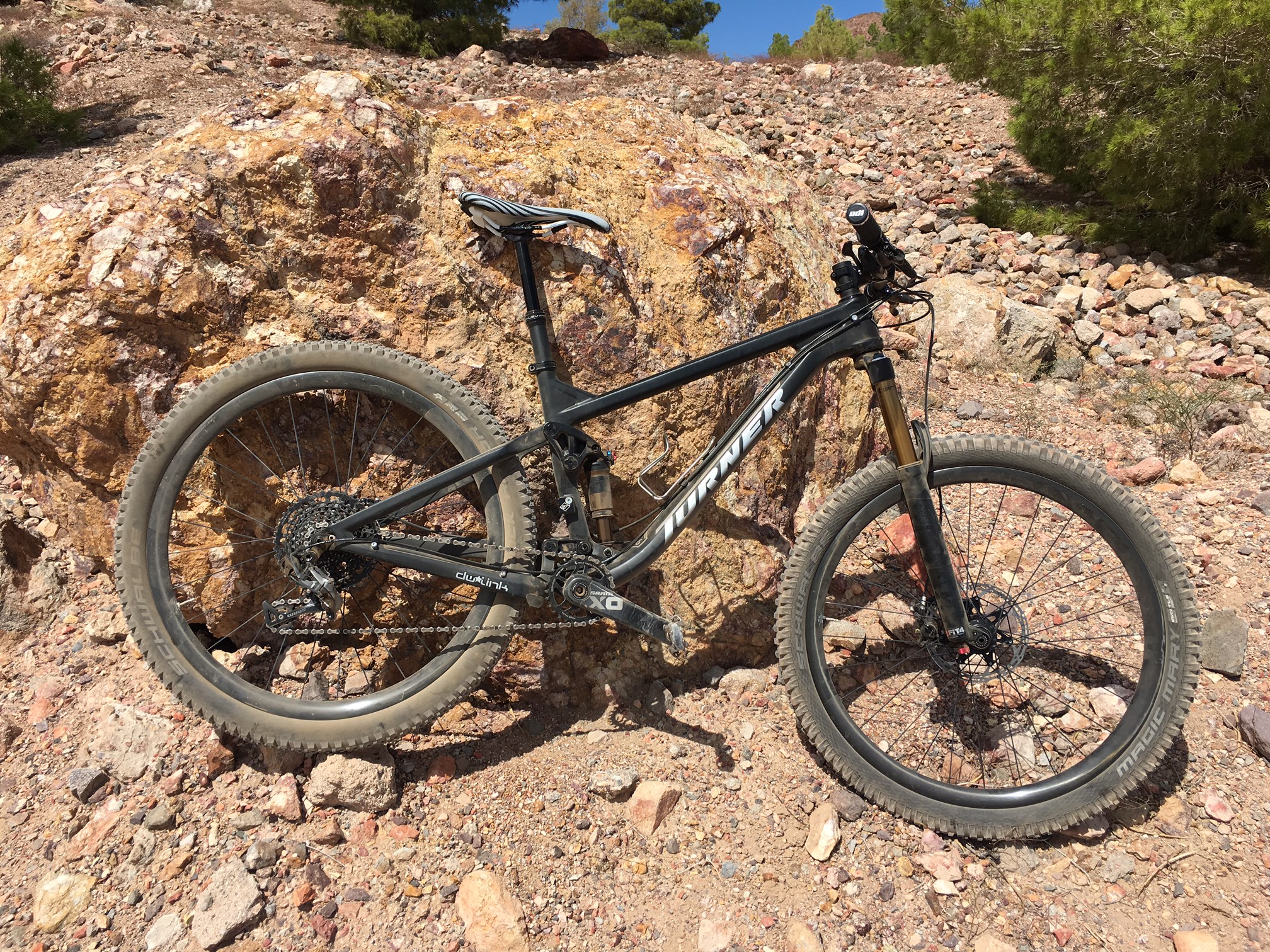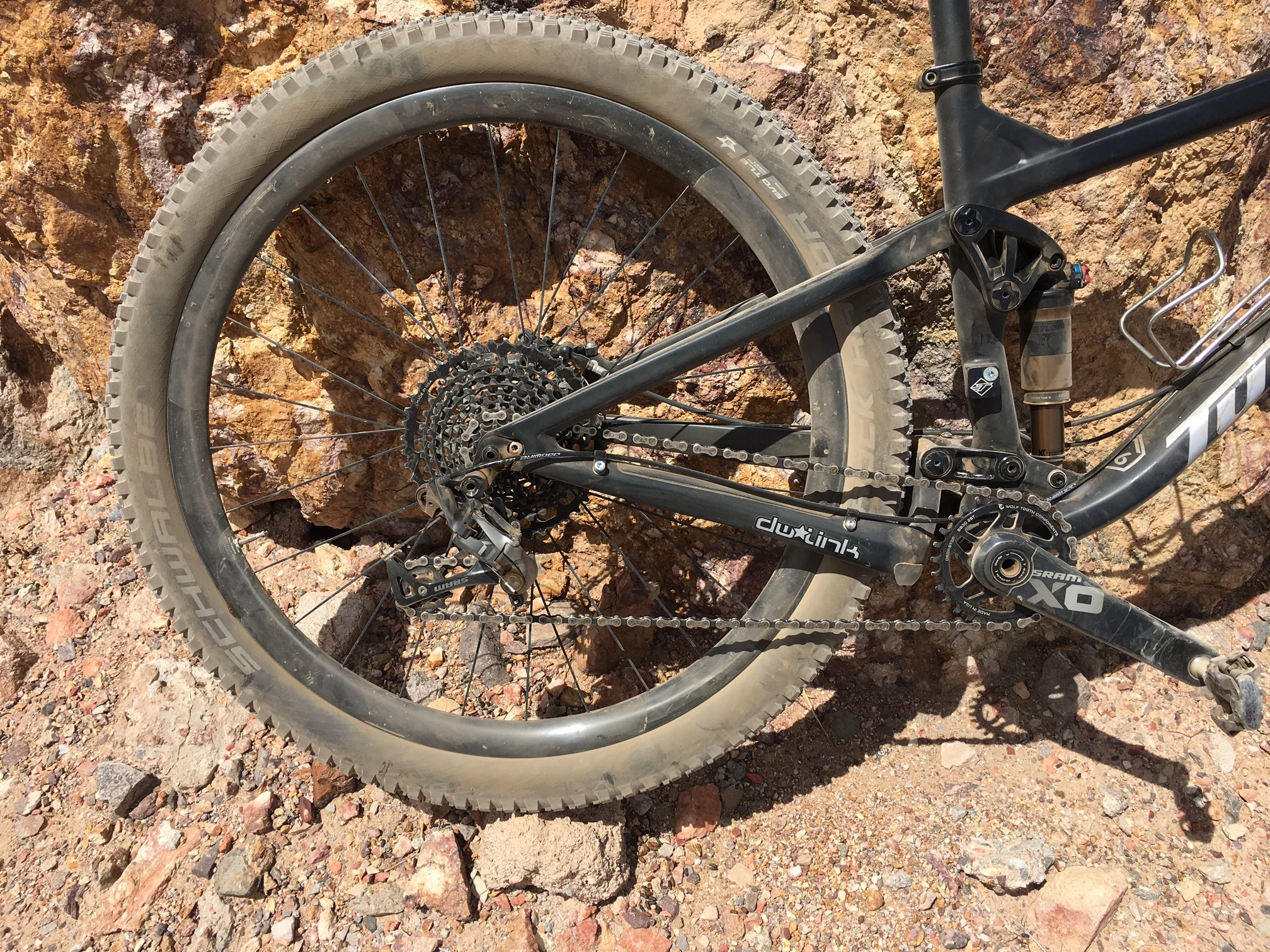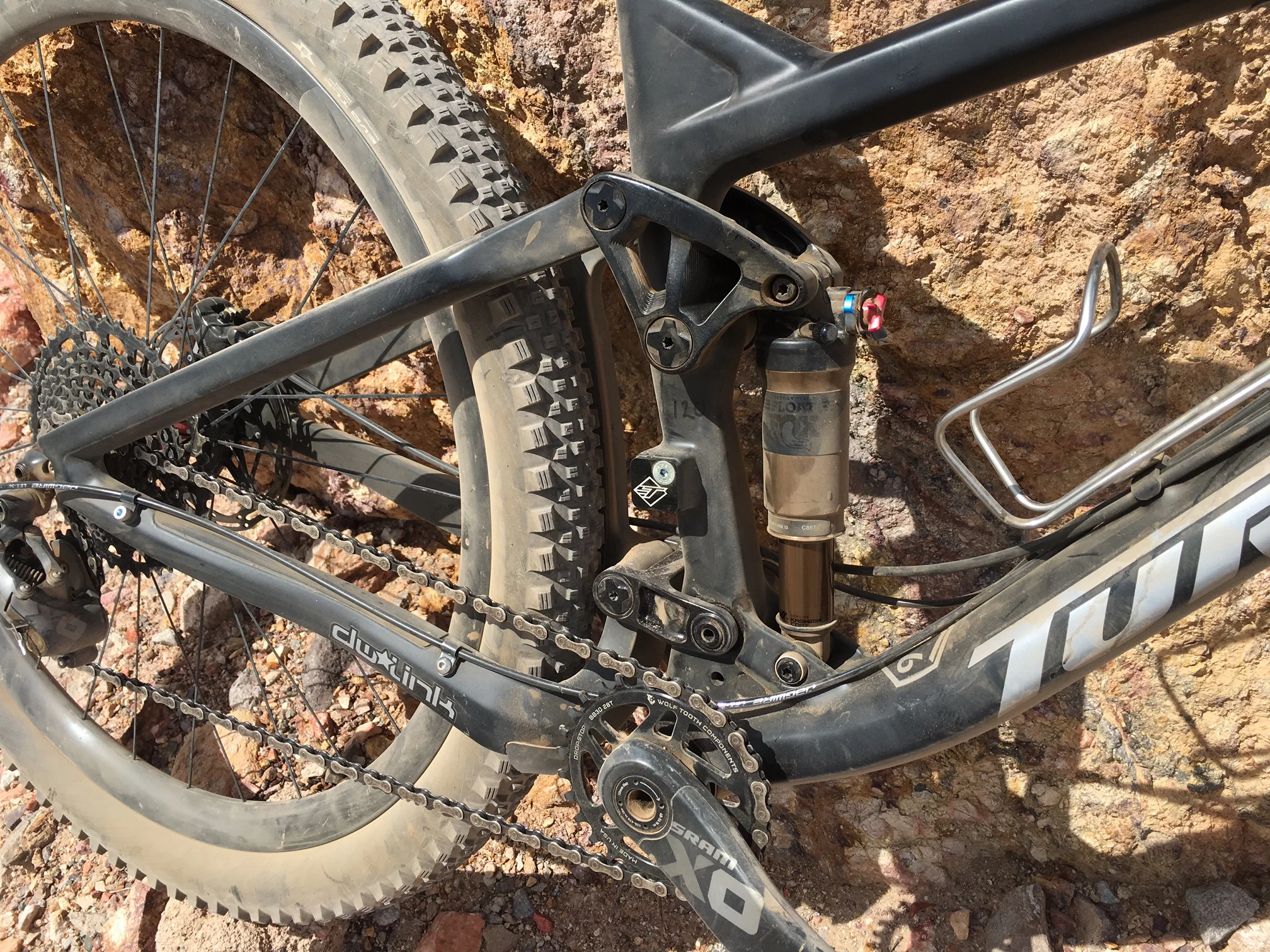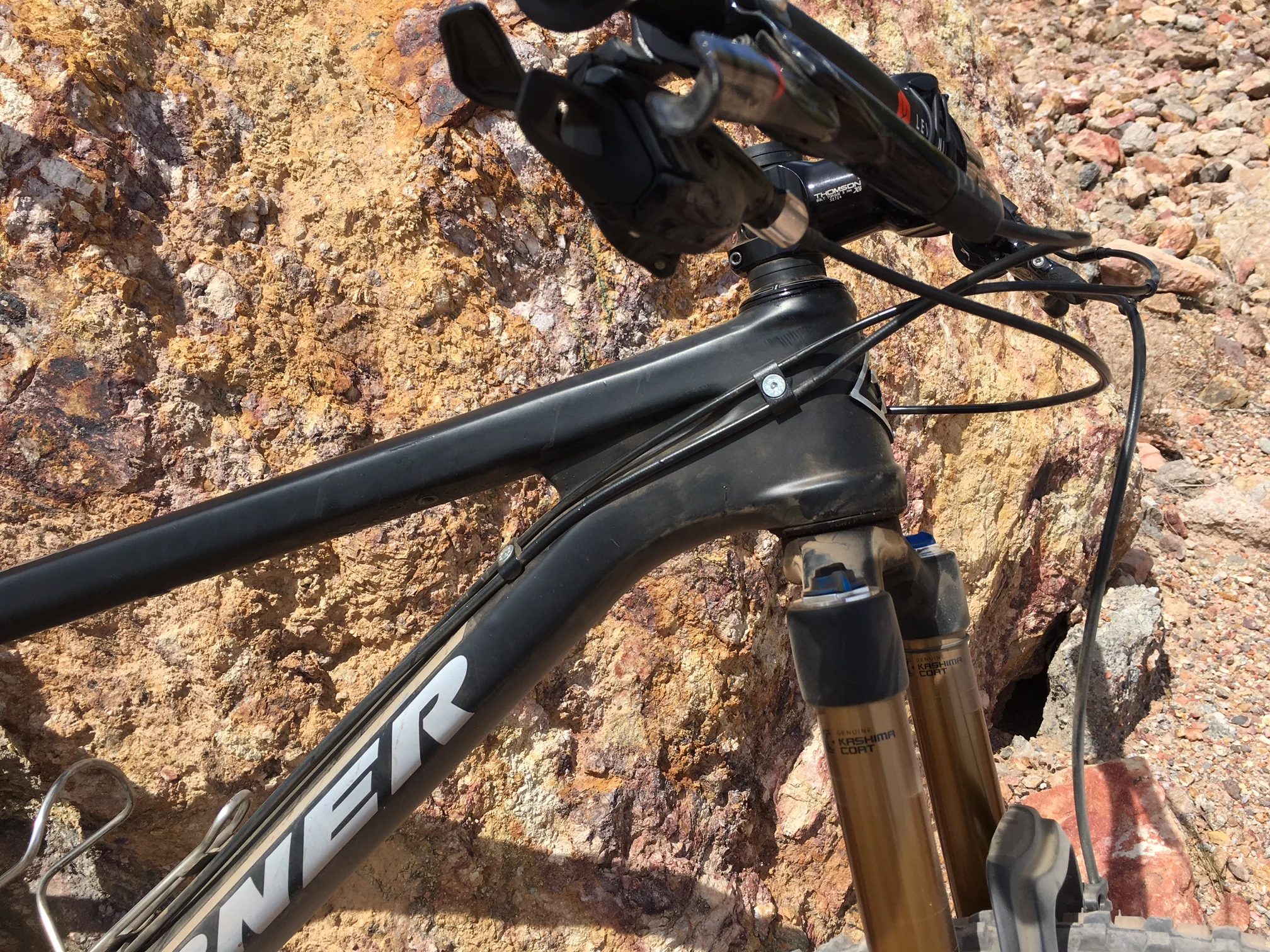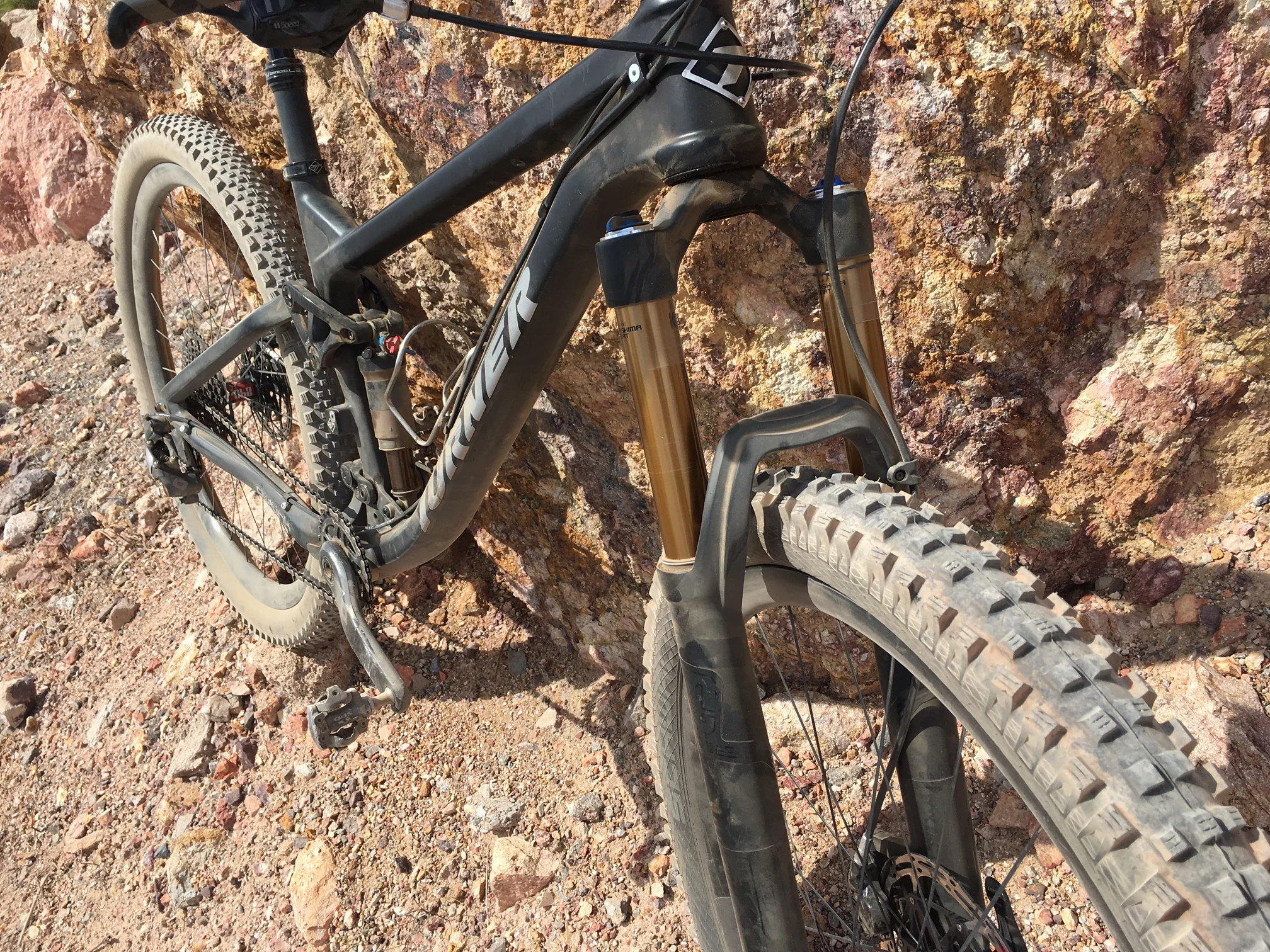Before we start, a note to you sharp-eyed Turner Homers about the black color of the Flux that I test rode. Yes, the Flux will be in white only & No, there will not be a black version. This is a pre-production frame that is the only rideable medium Flux currently is existence. So, please...Don't start emailing David Turner saying that you're ready to order a black Flux today. The white color is very nice.
OK, onto my review...
Climbing on the Flux feels like hitching a ride on a rocket ship. Even compared to the the RFX which two of my comparison test riders have said climbs better than their Santa Cruz 5010s, the new Flux gains altitude noticeably faster.
Climbing – 5 stars
I had given the RFX 5 stars for climbing performance in my Interbike reviews from last year (INTERBIKE 2015: Turner RFX v4.0 Review), but the Flux feels even a good measure more efficient than the RFX. It feels even as fast climbing as many 29ers I’ve ridden. This climbing efficiency does not however come at the expense of traction enhancing bump absorption. The dw-link suspension controls suspension bobbing with minimal compression damping by separating pedal forces from suspension movement. The resulting effect is a bike with a hardtail-like feel at the pedals while still absorbing trail obstacles and bumps to maximize available traction. This may all sound like marketing hyperbole, but all I have to say is that you really need to ride a Turner bike to understand how well it climbs compared to other bikes especially on more technical trails where the suspension needs to remain efficient while contending with roots, rocks and obstacles.
Descending - 4 stars
The Flux has a sharp handling feel, but does require more attention while descending than slacker angled bikes such as the RFX. The flipside of being more nimble and fast steering is, well, it’s faster steering. Pick your poison...faster steering or more stable.
Cornering - 5 stars
Steering on the Flux is quick and precise. If your trails are more tight and twisty than wide open and fast, this is your bike. Having lived and ridden in the Tri-state area around New York City, I’m quite familiar with how much slower and technical East Coast singletrack can be than West Coast singletrack. The rocks and roots found on East Coast singletrack reward a more trials-like riding style rather than just blasting through trail obstacles. More nimble bikes work great on this type of trail with their ability to thread narrow lines and be repositioned quickly on the trail. The Flux reminds me of my Kona hardtail that I rode back in those days with its eagerness to chase its tail on trails that wrapped around trees only with 120 mm of fully active suspension travel.
Summary: The Flux was super fun to ride though requiring a more active riding style to stay on top of its eager handling characteristics
Here’s how I would compare the Turner Flux to the RFX. Both bikes retain a nimble feel for everyday trail riding unlike some enduro “race” bike designs, but with its faster steering manners, the Flux is perhaps suited to a different riding style and trail characteristics than the RFX. These are some considerations in deciding whether the Flux or the RFX would be the better Turner bike for you.
